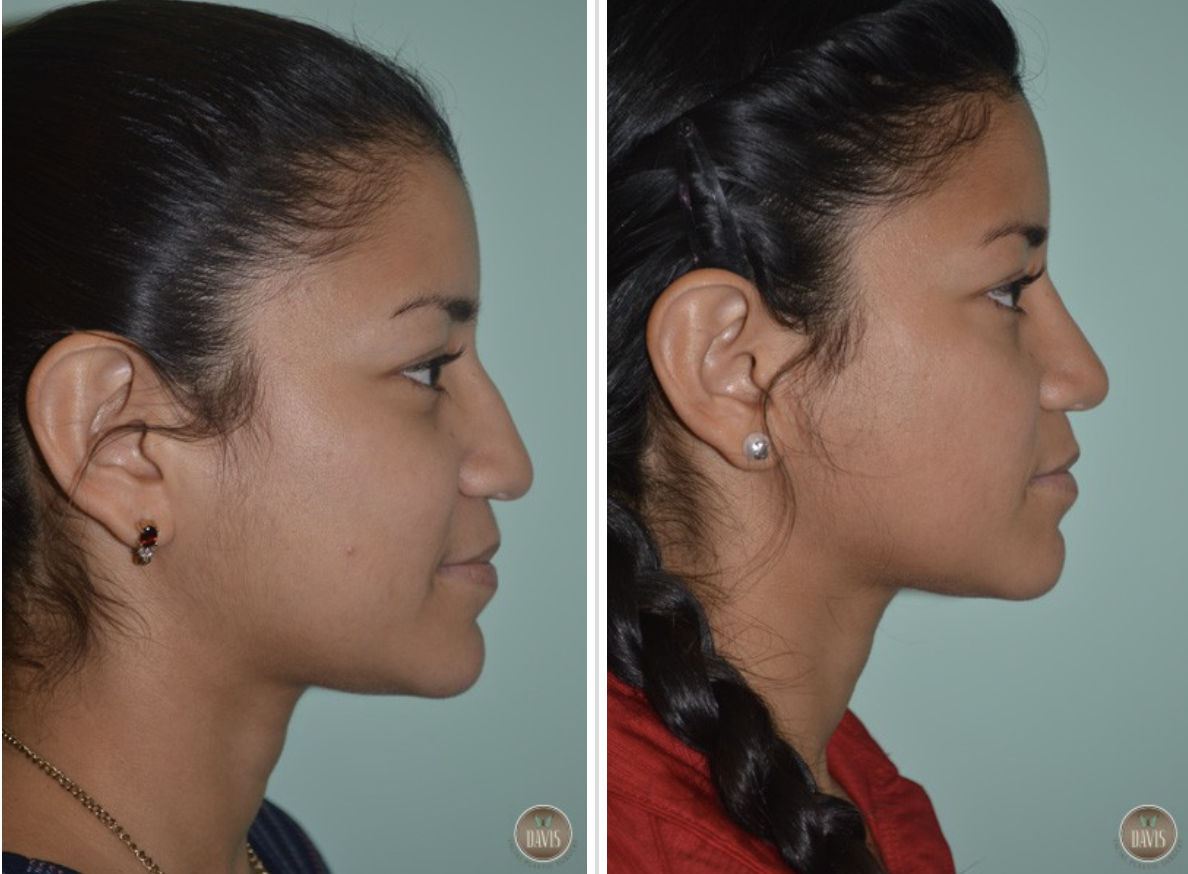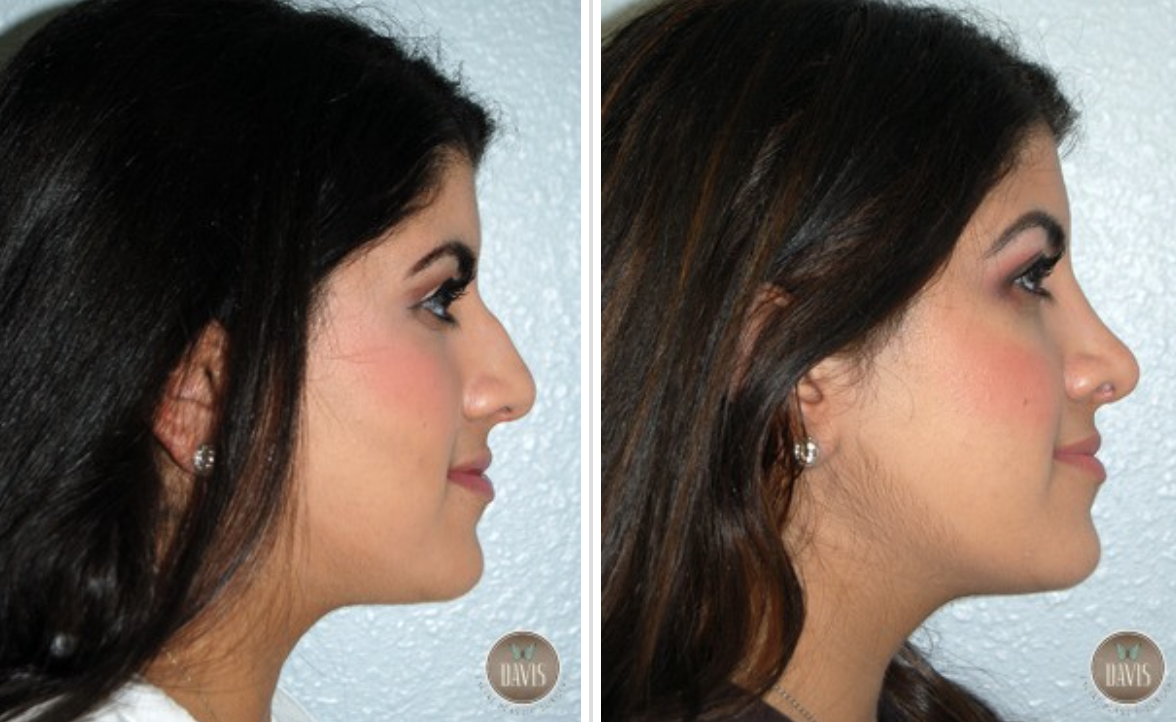Hispanic Rhinoplasty
in Tampa and St. Petersburg, FL
Men and women in Florida including Tampa, St. Petersburg and the surrounding towns who are of Hispanic ethnicity require special considerations for rhinoplasty procedures. Hispanic individuals typically have thicker skin on their nose compared others. Other differences include nostril flare and position, nose type structure and other subtle anatomical considerations. Hispanic rhinoplasty, therefore, requires a specialized skill set and experience base, such as that of Dr. Dean G. Davis, a dual-board certified facial plastic and reconstructive surgeon and otolaryngologist who intimately understands the unique needs of his Hispanic patients.
What is Hispanic Rhinoplasty?
Hispanic rhinoplasty is defined as cosmetic surgery of the nose with a particular focus on certain ethnic features. Many patients have also called it Latino or Latin rhinoplasty. Specific ethnicities who might undergo Hispanic rhinoplasty include people from Portugal, Spain, Cuba, South America, Mexico, Puerto Rico and Central America who want to reshape their noses.
As with any other form of ethnic rhinoplasty, when working with Hispanic noses, it’s critical to fully understand the common challenges that can occur with patients in this category. That said, Hispanic rhinoplasty patients can vary greatly in their appearance. This is because there are various ethnic groups among Hispanics, each with their own distinct features. For example, patients who come primarily from Central and South American heritage will have noses that differ from patients with a mainly Spanish background. However, there are several Hispanic nose types that are commonly encountered by cosmetic surgeons.
- Mestizo: A combination of Native American and European features. The base is typically broad with thick skin and a fairly wide tip. When it comes to surgically improving the appearance of this nose, it’s the most difficult of the three to work on. The surgery requires the surgeon to use grafts on the dorsum, make the tip graft longer and alter the tip of the nose.
- Castilian: This nose type is Spanish in origin and also includes some Caucasian noses. It features normal tip projection with a high nose bridge. Appearance issues with Castilian noses can usually be addressed by means of tip revision and dorsal reduction.
- Mexican-American: This is a combination of Castilian noses. It typically features a normal bridge, drooping tip and low radix (root). When performing Hispanic rhinoplasty on these noses, it’s necessary to graft the dorsum or radix, as well as revise the tip using a columellar graft.

Ethnic Rhinoplasty

Ethnic Rhinoplasty
What Are Ethnic Features Of A Latino Nose?
Hispanic and Latino noses possess a wide array of variability depending on the specific ethnicity. Therefore, surgical methods must be specially tailored to each patient to give them a nose that fits naturally with their unique appearance and facial structure. Generally, Hispanic noses are wider than Caucasian noses, yet not as wide as African noses. They also tend to feature a more bulbous tip, wider nostrils and thicker skin than Caucasian noses. Because Hispanic noses often possess drooping tips with soft, weak cartilage, it’s necessary to use cartilage grafts in these patients to achieve the desired support and refinement. Strong cartilage is required in order to provide lift and definition in drooping nose tips and those with poor definition.
What Are The Intra-Ethnic Variability Amongst Latino/Hispanic Noses And How Are They Categorized?
Variations in intra-ethnic features in Latinos depend on region. Those from the Caribbean tend to have some African genetics and are more likely to have noses with those features. On the other hand, those from South and Central America usually have very low rates of African heritage, so their noses are more in line with Caucasian types. Furthermore, noses of Central American Hispanics, while more similar to Caucasian than African noses, fall somewhere between South American and Caribbean types.
The Hispanic Rhinoplasty Procedure
During the Hispanic rhinoplasty surgery, Dr. Davis takes weak tip cartilage and thick nose skin into consideration by fortifying the cartilage that makes up the tip of the nose. Most of the time, this is done by placing a graft using cartilage from the patient’s ear, rib or nasal septum. This graft makes it possible for the nasal cartilage to provide the skin with the support it needs. When reshaping this new cartilage, the normal goal is to decrease its width and make the tip less round without disturbing the patient’s natural Hispanic features.
When a patient is concerned with a high dorsal bump along the nose bridge, Dr. Davis will reduce unnecessary cartilage and bone with precision, smoothing the area out. In order to enhance the appearance of noses with flared nostrils and a wide base, Dr. Davis might need to reduce some of the soft tissue that borders the outside of the base of the nostrils. It may also be necessary to extract a portion of the soft tissue near the bottom edge of the nostrils.
Afterward, the edges of the nose are stitched back together along the nasal midline, achieving narrower nostrils that flare less. In any event, it’s important to ensure that any alterations to the dorsal hump and the base of the nose are as subtle as possible. This allows them to come together seamlessly, helping to maintain the correct proportions in relation to the rest of the nose and face.
Preparing for a Hispanic Rhinoplasty
Before your Hispanic rhinoplasty procedure, you must avoid using certain medications in order to minimize the risk of excessive bleeding. These include aspirin, ibuprofen and other non-steroidal anti-inflammatory drugs (NSAIDs). Some herbal and nutritional supplements must also be avoided for this purpose. Smoking and alcohol consumption are also strongly discouraged prior to your surgery.
Hispanic Rhinoplasty Recovery
In most cases, you will have a molded plastic splint on your nose after your surgery if it involved any changes to the bones of your nose or if you required a cartilage graft. Most patients experience only minor discomfort right after their Hispanic rhinoplasty surgery. Any bruising will fade on its own, but this may take up to two weeks or longer to fully disappear. For six weeks, it’s strongly recommended to steer clear of any rigorous physical activity. By the time one month has passed, the majority of patients have healed enough that nobody can tell they’ve undergone plastic surgery.
Real Patient Reviews
“I am currently two weeks post-rhinoplasty with Dr. Davis and I already am in love with my results. I knew in my heart from the moment I met Dr. Davis at my consultation that I would 1) finally get this surgery for myself and 2) choose him as my surgeon, despite feeling the need to do my due diligence and see a few other doctors before making a final decision. Although his practice is on the pricier side for rhinoplasties, it’s worth every penny to go for the best when you are trusting someone with reconstruction on your face! Everyone has been SO nice at every appointment. This was my first ever surgery (I know, I picked a doozy for my first) and I felt so comfortable every step of the way. As everyone else mentions, Dr. Davis’ bedside manner is unbeatable. I’m not going to lie and say the recovery was pleasant at all, but I don’t think it’s anywhere near as bad as it could have been if I didn’t have his guidance and support throughout. I did this surgery for purely cosmetic reasons but Dr. Davis did see a slight deviation in my septum while operating and straightened it out for me, making my breathing even better than I even thought possible! I already love my new nose so much and I can’t wait to see it evolve over the months to come.” – Ariana L.
How Much Does Hispanic Rhinoplasty Cost?
During your consultation, Dr. Davis will review your procedure costs. Davis Facial Plastic Surgery does not participate in any medical health insurance plans. If you have any questions about financing your procedure, contact Davis Facial Plastic Surgery. Dr. Davis accepts all major credit cards, CareCredit®, and cash for procedures.
Why Choose Davis Facial Plastic Surgery?
You can count on Dr. Davis to provide superior care and optimal Hispanic rhinoplasty results. These factors alone are a great reason to choose Davis Facial Plastic Surgery to perform your procedure. However, besides Dr. Davis’ quality care commitment and long track record of natural-looking and exceptional results that bring out the best in his patients, he is particularly qualified to provide Hispanic rhinoplasty surgery. Dr. Davis’ level of experience and expertise is almost unmatched in the Tampa and St. Petersburg area thanks to his exclusive focus on neck and face surgery. You can be assured that he possesses a thorough understanding of both function and aesthetics.
The unique characteristics of a Hispanic nose must be carefully considered as part of any rhinoplasty surgical plan. If you are of Hispanic ethnicity and considering rhinoplasty, contact our Tampa office to schedule a private Hispanic rhinoplasty consultation with Dr. Davis.
